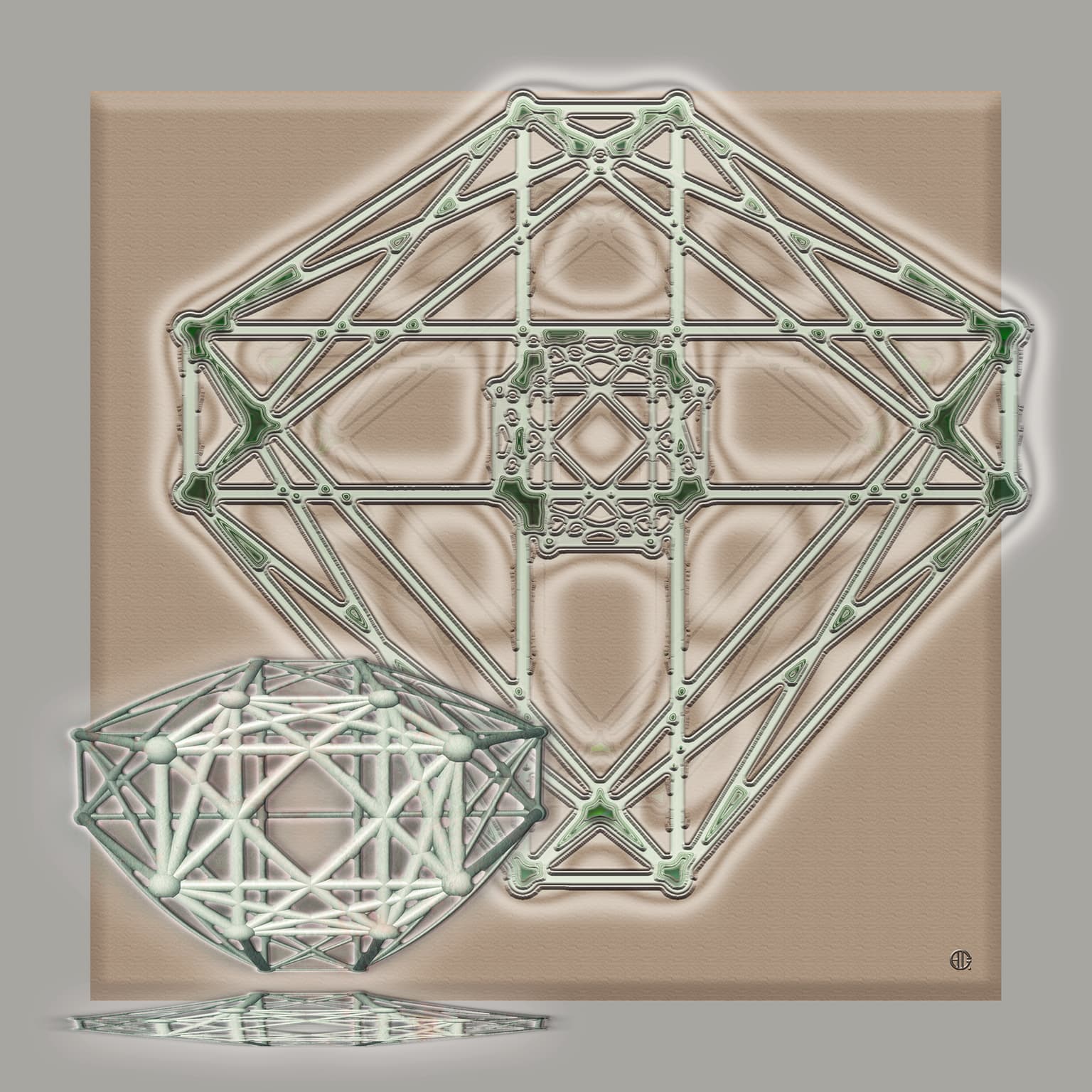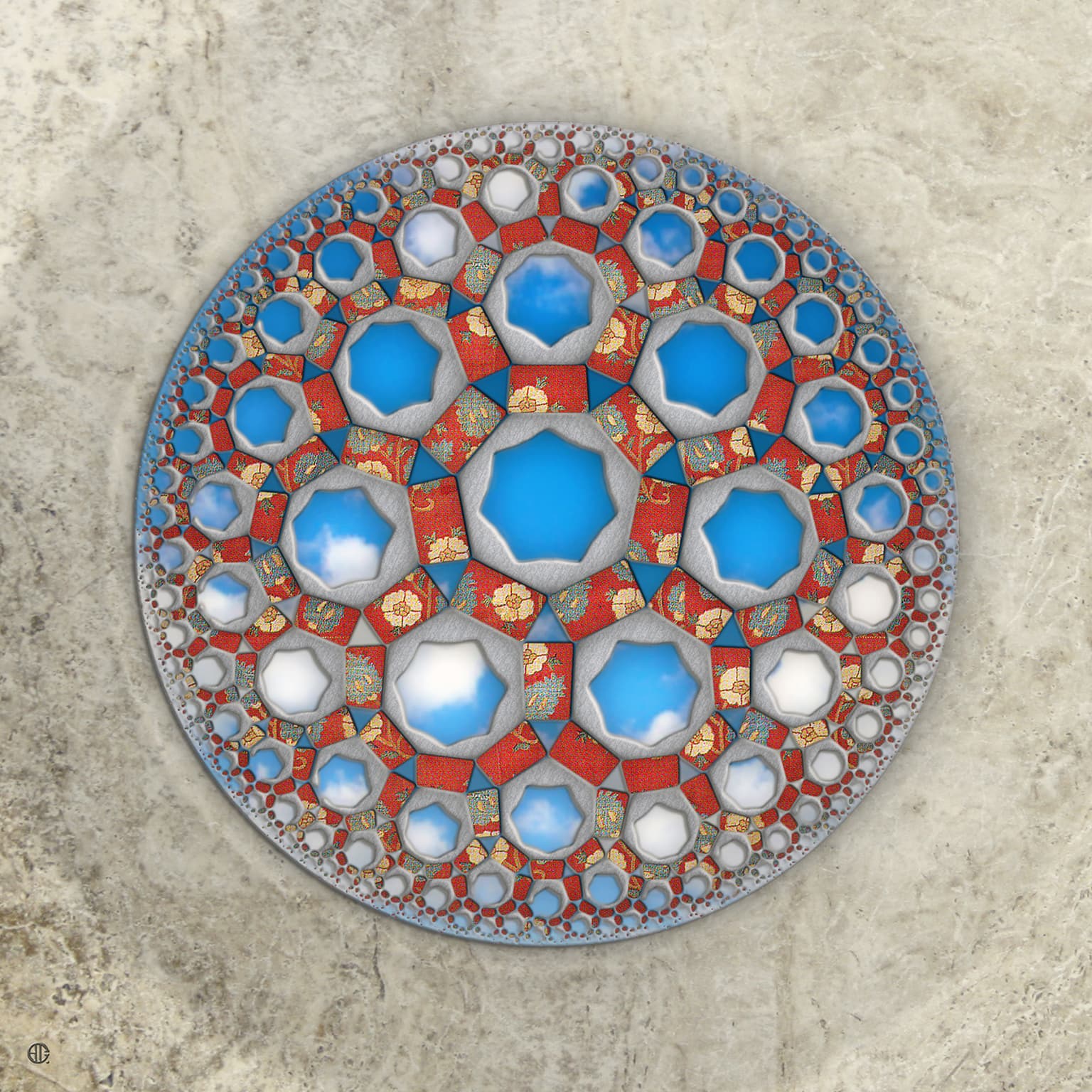Jean Constant
Artists
Jean Constant
Researcher
Hermay NM
Santa Fe, NM, USA
Statement
This series originated in Jeff Weeks’ educational programs that explore curves and 4D objects in a flat two dimensional environment - screen, paper or canvas. Artists use volume and color to create the perception of a new reality on a two dimensional surface. Blending the precise and factual descriptive of non Euclidian geometry with the tools of the visual arts has been to me both a rewarding challenge and a unique source of inspiration.
Artworks

The 16-cell polytope is a finite regular four-dimensional cross polytope. It is also known as the hyperoctahedron or hexadecachoron. It is one of the six regular polychora and is composed of 16 tetrahedra, with 4 to an edge*. It has 8 vertices, 24 edges, and 32 faces.
(*Weisstein, Eric W. "16-Cell." From MathWorld).

7-symmetry hyperbole ceramic on a bed of travertine stone
60 x 60 x 5 cm
Pigments on Dibond aluminum base
2015
The 7-symmetry group hyperbola (pmgb) is described by French mathematician D’alembert in “Encyclopedie methodique” as a simple hyperbole where the spaces p & m are both infinite.